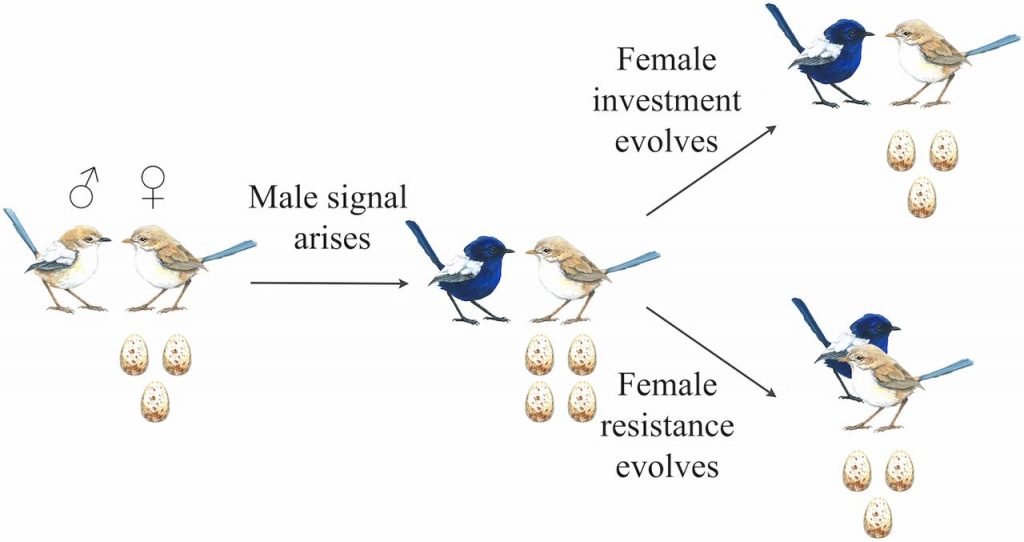Why do life-long mating displays evolve in monogamous species?
In some socially monogamous species, displays continue well after initial mate pairing, indicating that a mechanism other than sexual selection acts to preserve this behavior. These displays may evolve because they stimulate the mate to increase parental investment in offspring, increasing either the number produced or their juvenile survival through increased provisioning or defense. This effect has been demonstrated empirically by display manipulation in long-lived birds like great crested grebes (reviewed in Servedio et al. 2013).
With Maria Servedio (UNC) and collaborators Trevor Price (U Chicago), and Russell Lande (Imperial College London), we built a combination quantitative genetics and population genetics model to explore the conditions under which such displays will evolve. See the results in our PNAS paper and read the commentary and news coverage. You can also explore the parameter space in an online app.



